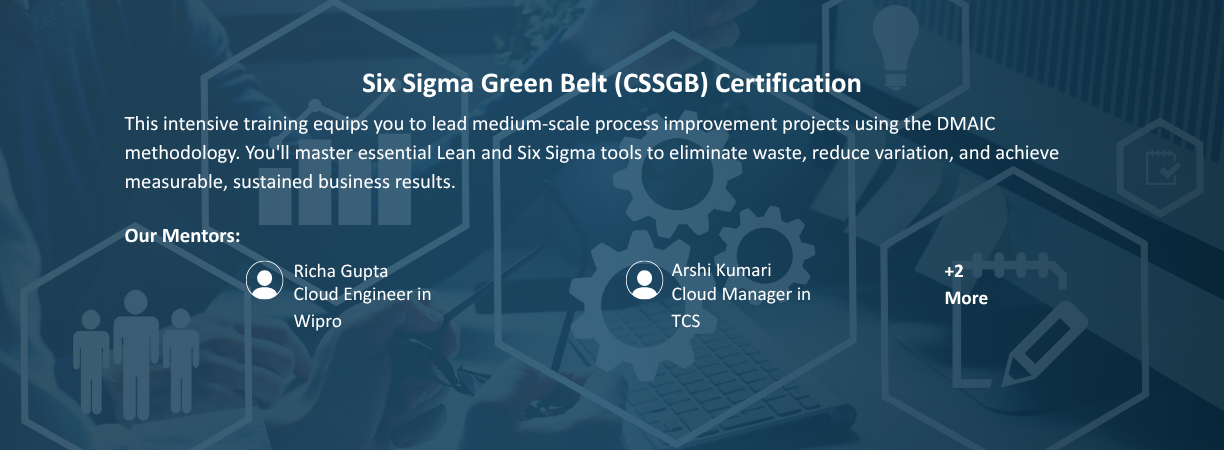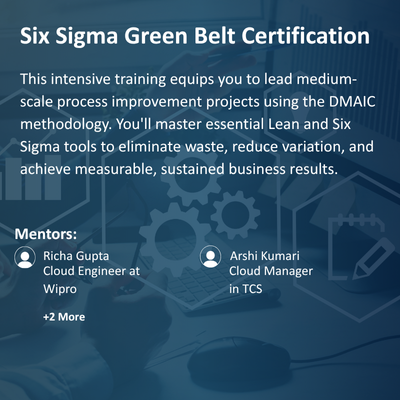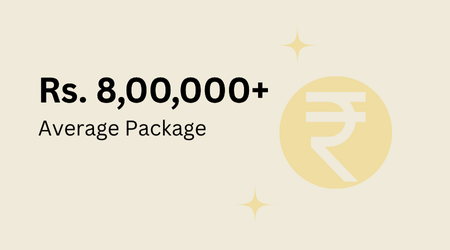







Major Industry Recruiters






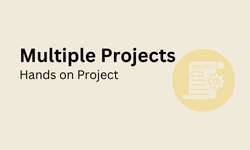

Major Industry Recruiters
Course Description:
The Six Sigma Green Belt Certification Training is an intensive program designed to equip you with the fundamental knowledge and practical skills required to lead medium-scale process improvement projects within any organization. You will master the globally recognized DMAIC (Define, Measure, Analyze, Improve, Control) methodology, along with essential Lean tools, to identify root causes, eliminate waste, reduce variation, and achieve measurable, sustained business results.
This course emphasizes hands-on application, enabling you to contribute to and lead high-impact quality and efficiency projects effectively. As a certified Green Belt, you will become a key driver of operational excellence and an invaluable asset to your team and organization.
Course Objective:
The primary objective of the Six Sigma Green Belt (CSSGB) Course is to equip participants with the in-depth DMAIC methodology and essential Lean Six Sigma tools necessary to lead and execute medium-scale process improvement projects that deliver measurable, sustained financial and operational benefits.
Upon successful completion of this 20-day course, participants will be able to:
Lead DMAIC Projects: Confidently launch, manage, and execute Green Belt projects by applying the Define, Measure, Analyze, Improve, and Control (DMAIC) framework to solve complex organizational problems.
Master Data Analysis: Utilize statistical tools and techniques (including hypothesis testing and process capability analysis) to establish process baselines, analyze data, identify true root causes, and validate solutions.
Drive Operational Excellence: Integrate Lean principles (waste elimination and flow) with Six Sigma (variation reduction) to permanently eliminate non-value-added activities and achieve sustained quality and efficiency improvements.
Quantify Business Impact: Define project scope, measure and report financial benefits, and develop control plans to ensure that all process improvements are maintained long-term, serving as an invaluable asset to operational excellence efforts.
Course Module:
The training is typically broken down into the five phases of DMAIC:
Module 1: Define Phase
Introduction to Six Sigma: History, philosophy, organizational roles (Yellow, Green, Black, Master Black Belts), and linking Six Sigma to business strategy.
Voice of the Customer (VOC): Identifying customer needs and converting them into Critical-to-Quality (CTQ) requirements.
Project Definition: Creating the Project Charter, defining project scope, and identifying key process metrics (Y).
Process Mapping: Developing high-level process maps (SIPOC and Value Stream Mapping).
Team Dynamics: Selecting team members and managing team activities.
Module 2: Measure Phase
Process Performance: Establishing baseline performance metrics and calculating process capability (Cp, Cpk).
Data Collection Plan: Developing sampling plans, defining data types (continuous vs. discrete), and ensuring data integrity.
Measurement System Analysis (MSA): Understanding and applying Gage R&R studies to ensure the accuracy and reliability of measurement systems.
Basic Statistics: Introduction to descriptive statistics (mean, median, mode, standard deviation) and graphical tools (Histograms, Pareto Charts, Box Plots).
Module 3: Analyze Phase
Root Cause Analysis: Using qualitative tools like the Fishbone (Ishikawa) Diagram and the 5 Whys.
Data Analysis: Utilizing advanced graphical analysis to visualize data patterns and relationships (Scatter Plots).
Hypothesis Testing Fundamentals: Introduction to statistical hypothesis testing to validate suspected root causes (e.g., comparing means or variances).
Correlation and Regression: Simple linear regression to understand the relationship between inputs (X) and the output (Y).
Process Modeling: Refining process maps to identify non-value-added steps and bottlenecks.
Module 4: Improve Phase
Brainstorming and Creativity: Techniques for generating potential solutions (e.g., nominal group technique).
Lean Improvement Tools: Applying concepts like 5S, Poka-Yoke (Mistake-Proofing), and Kaizen to streamline processes.
Solution Selection: Using tools like the Criteria Matrix or FMEA (Failure Mode and Effects Analysis) to evaluate and prioritize solutions.
Pilot Testing: Planning and executing a pilot test to validate the effectiveness of the chosen solution.
Module 5: Control Phase
Statistical Process Control (SPC): Understanding and utilizing Control Charts (e.g., R, p, and c Charts) to monitor the process and detect variation.
Control Plan Development: Creating a structured plan to document new procedures, monitoring methods, and reaction plans for process stability.
Process Documentation: Standardizing procedures and ensuring training for process owners and team members.
Project Closure: Calculating and reporting the final financial and operational benefits, and formally closing out the project.
Course Overview:
Upon completion of this course, you will be able to:
Master the DMAIC Framework: Understand and apply the five phases of the Six Sigma improvement cycle (Define, Measure, Analyze, Improve, and Control) to solve complex business problems.
Lead Project Teams: Successfully launch, manage, and execute Green Belt-level projects, working under the guidance of a Six Sigma Black Belt.
Apply Statistical Tools: Utilize key statistical analysis tools (like Minitab or other software) to analyze data, measure process capability, and validate root causes.
Drive Financial Impact: Quantify the financial benefits of process improvements and manage the business case for Six Sigma projects.
Integrate Lean Principles: Incorporate Lean concepts, such as waste reduction and flow efficiency, with Six Sigma's focus on variation reduction to achieve Lean Six Sigma.
Sustain Gains: Develop control plans and monitoring systems to ensure that process improvements are maintained long-term.

Upcoming Batches: Choose as per Your Requirement
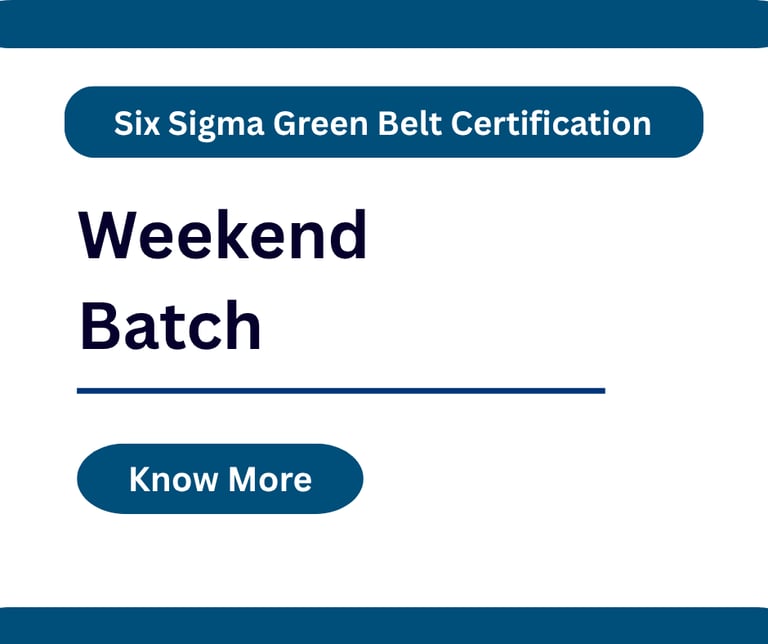

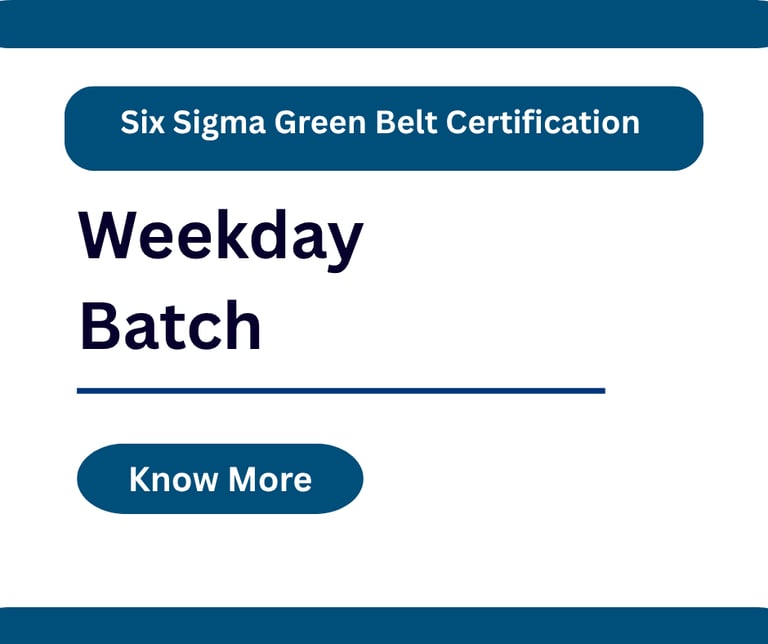

Our Mentors:
Richa Gupta
Cloud Engineer in Wipro
Arshi Kumari
Cloud Manager in TCS
Ahmed Khan
Cloud Engineer in Cognizant
Abhishek Singh
Cloud Engineer in IBM
Our Mentors:
Richa Gupta
Cloud Engineer in Wipro
Aina Rathor
DevOps Engineerex-Deloitte
Ahmed Khan
Coud Engineer in Cognizant
Coud Engineer in IBM
Abhishek Singh
Our Alumni Work at Top Companies
FAQs – Six Sigma Green Belt Certification at GIMIT
1) What is a Six Sigma Green Belt, and what will I be able to do?
A Six Sigma Green Belt is a professional trained to lead smaller, well-defined process improvement projects or support larger projects led by a Black Belt. You'll use the DMAIC methodology to solve quality and efficiency problems.
2) What is the DMAIC methodology covered in the course?
DMAIC stands for Define, Measure, Analyze, Improve, and Control. It is the structured, data-driven framework used throughout the course to systematically reduce defects and process variation.
3) Are Lean tools included in this Six Sigma course?
Yes, the course integrates essential Lean tools and principles (like 5S and Poka-Yoke) with Six Sigma's focus on variation. This approach, often called Lean Six Sigma, ensures you can eliminate waste and improve flow efficiency.
4) How much time will I need to dedicate to this course?
The total training duration is 20 days, with sessions running for 2 hours per day. This intensive structure is designed to provide a comprehensive understanding of the DMAIC framework and tools.
5) Will I learn to use statistical software like Minitab?
The course will train you to apply key statistical tools to analyze data, measure process capability, and validate root causes. While specific software may vary, the focus is on mastering the fundamental statistical analysis concepts.
6) Is prior experience required to enroll in the Green Belt course?
While no formal prerequisites are mandatory, it is generally recommended that participants have some experience in a business, manufacturing, or service process environment, as the course heavily emphasizes practical, real-world application.
7) What is the difference between a Green Belt and a Black Belt?
The Green Belt typically leads medium-scope projects and supports Black Belts on complex ones. A Black Belt leads large, cross-functional projects and mentors Green Belts, requiring a deeper mastery of statistical techniques.
8) What are the career benefits of getting a Green Belt certification?
The certification significantly boosts career prospects by proving your ability to drive quality improvement, reduce costs, and deliver measurable results. Green Belts are highly valued across various industries (e.g., IT, Manufacturing, Healthcare).
9) Will I learn to qualify the financial impact of my projects?
Yes, a key focus is on defining the business case and learning to quantify the financial benefits (cost savings, revenue gain) of your improvement projects, which is crucial for getting buy-in and reporting success.
10) What does the Control Phase involve, and why is it important?
The Control Phase is the final step of DMAIC, where you learn to set up monitoring systems, like Control Charts, and develop Control Plans. This ensures that the process improvements are sustained and the process doesn't revert to the old ways.

